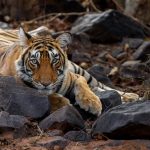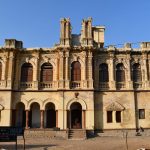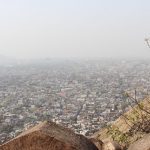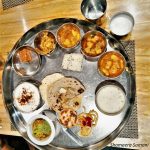TWIN PILGRIMAGE – DWARKA & SOMNATH
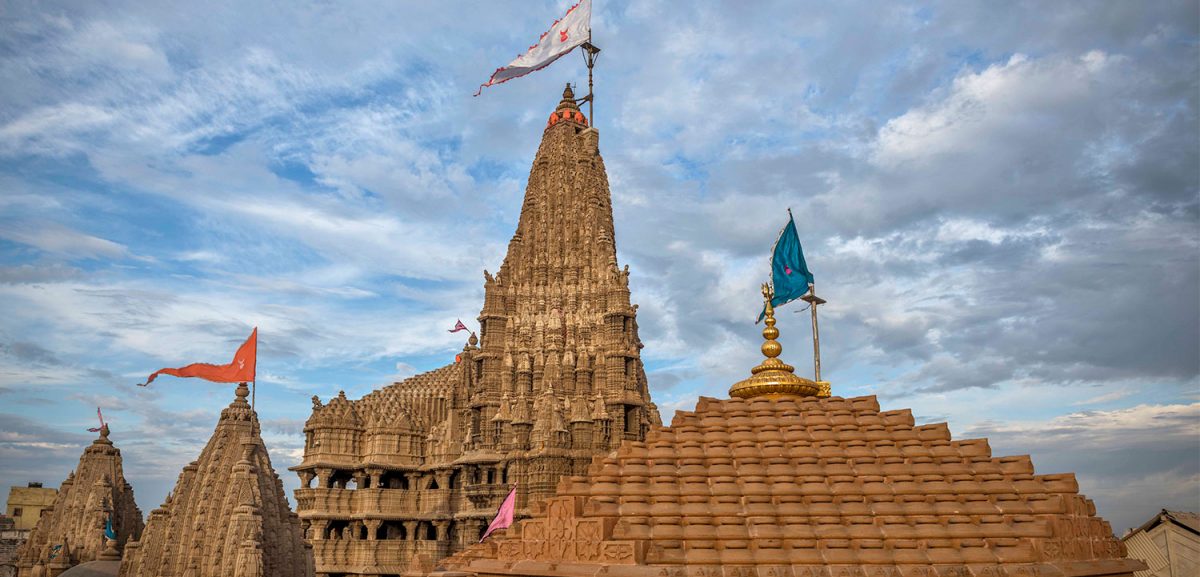
TWIN PILGRIMAGE – DWARKA & SOMNATH
Jai Shri Krishna! This is how most of the Gujaratis greet one another. Aptly enough, for the land of Krishna will have his name reverberating everywhere. Char Dham – The four main pilgrimages in Hinduism and out of the four, one is the Divine city of Dwarka. Beautifully perched on the shore of the Okhamandal Peninsula and lovably cupped in the caressing palms of the Gomti river is this small and peaceful holy city. Filled with tranquility, peace, and serenity and dotted with hundreds of temples the city was built around 2500 years ago.
Many a legends are woven around the city and the most interesting one explains why there isn’t any source of fresh water available in here, why the municipality of Dwarka city has to call for water trains and tankers from other places to fulfil the daily requirement of drinking water for the city. Now that I have built it all up till here, I guess I must share this story too. Here goes – Lord Krishna and Rukmini were pulling the chariot for Rishi Durvasa, the saint known for his short temper, to bring him to Dwarka for a feast on occasion of their marriage. Rukmini being a dainty princess felt thirsty on the way and Krishna brought Ganges to quench her thirst by prodding his toe in the ground. Rukmini drank the water but the Rishi sitting in the chariot took it as an insult as she did not offer him water first. He cursed Krishna and Rukmini that despite being married, they would not have the bliss of togetherness, and hence the temples of Krishna and Rukmini are also at quite a distance from each other. Another curse by Rishi Durvasa was that Krishna’s capital city will not have any source of fresh water and hence no vegetation too. Surprisingly enough, there aren’t any coconut trees also despite Dwarka being a coastal town. The soil is extremely salty here. But once here, you can feel a divine presence all around you.
The visitors usually arrive during evening hours after a drive from the nearby airport / railway station and straightaway checkin to their hotels. After a quick bite and a little rest, they leave for the temple visits. Lets begin at the main temple of Dwarkadheesh himself (Lord of Dwarka, Shri Krishna). One of the many pandits inside the complex would offer to be your guide for a fee “as per your wish” and that too, not compulsory. Our guide was a tall, fair skinned, doe eyed pandit ji all dressed in bright yellow and white. He regaled us with the stories associated with the temple with much drama, slowly closing and opening his almond shaped eyes while narrating. There was something about the way he dramatised his story telling that it left an everlasting effect on all of us listeners. A visit to the temple is incomplete if you do not engage a guide to tell you interesting anecdotes and history of the temple.
It is believed that the temple was built by Vajranabh, great grand son of Lord Krishna. The temple is beautifully carved out of limestone and is still in pristine condition with very little signs of erosion. The tallest Shikhara of the temple is 78.3 m high and is right above the Garbha Griha where the deity is housed. The temple is spread over a large area, with many smaller temples built within the complex. The shikhara is adorned by a flag with sun and the moon depicted on it. The flag is made in many colours and is said to be changed five times a day.
A short walk around the complex and we visited many small temples, a kirtan hall and a display of Shivalingas made out of precious stones. We then descended some steps leading us down to the Gomti Ghat – another divine experience! We reached the ghat at dusk and were spellbound by the sight of lit diyas floating in the river. Beautifully lit clean water of the river, confluences here with the salty greenish water of the ocean. Such a demarcation of colour and temperature of water, that this definitely needs to be experienced by all travellers to Dwarka. As we ascended the steps again and were on our way out, our guide took us to Maa Devaki’s temple which is situated right in front of the main temple and the idols are facing each other with a direct line of sight. The Lord in Dwarkadheesh temple is depicted in his child avatar and it is believed that Maa Devaki is constantly keeping an eye on her little child from her temple. After this holy experience, we thanked our well informed guide profusely and left for a little walk by the sea. Dwarka is home to many cows and you will meet them at every nook and corner of the town, by the sea shore too. The many temples that we visited the next morning included, Mata Rukmini Temple, Gayatri Temple and Nageshwar Temple, the last being one among the twelve Jyotirlingas.
The next stop on our itinerary was the Majestic and indomitable Somnath Temple. The coastal road from Dwarka to Somnath is dotted with many wind mills and you can see the ocean waving at you occasionally wherever the road moves closer to it. Porbandar, Gandhiji’s birth place is on the way and is always recommended for a brief stopover. A quick visit to the Mahatma’s home, Sudama Mandir and Bharat mandir and you are on your way to Somnath via Veraval. Veraval, other than being a boat repair centre is of religious importance to Hindus as the place where Lord Krishna was shot at by a Bhil is located here. There is a temple that is built at the spot. The legend has it that Lord Krishna was divinely protected from any physical harm except on the soles of his feet. As he was resting under a tree here during an afternoon, a Bhil mistook his foot to be a deer and shot an arrow which became the medium for Lord Krishna’s departure from the mortal world. A quick visit here and you may head to Somnath. There are other temples also on the way, including the Triveni Sangam – the point of confluence of Hiran, Kapila and Saraswati rivers. Arrive at Somnath and maybe check into your hotel and after a little refreshment head to the Somnath temple. Standing majestically tall and indomitable is the Somnath temple right at the seashore. It takes a while to soak in this stunning view. Beautifully built temple against the backdrop of the soaring roaring ocean! As you walk towards the temple, the air itself carries the scents of divinity, you realise that this definitely is not just any other temple, you are arriving at The Somnath Ji. The symbol of indomitable spirit, rising from the ashes again and again, yes, eight times! The temple
has been attacked and destroyed seven times and built and re-built eight times. The temple that now stands was constructed in guidance of Sardar Vllabhbhai Patel. Believed to be the first of the twelve Jyotirlingas, it is a major pilgrimage site for Hindus. Jyotirlingas are considered as the places or sites where Lord Shiva appeared in a divine form, as a column of fire in Somnath as is believed. These are undivided undisputed symbols of the supreme presence. The shape of a lingam represents a beginning less and endless stambh or a pillar symbolising the omnipotent and omnipresent divinity.
The beautiful temple complex is definitely a must visit for everyone. Immaculately manicured gardens surround the main temple. The brine laden sea breeze envelopes the whole atmosphere, and the complex is spectacularly clean. Pay your obeisance at the “holy Darbar” and go around the temple for a slow and leisurely parikrama. Walk along the neatly laid out walkway along the mighty Indian Ocean and let your breath get in sync with the waves beating against the temple foundation. Feel one with the universe while you gaze at the horizon far away. Stay for the light and sound show at the amphitheatre behind the temple and do not forget to buy the chikki and laddoo prasad from the temple shop. On your way out, visit the small Ganpati temple on the left, have a drink of fresh cool water and leave with a feeling of eternal bliss.

